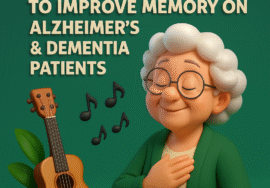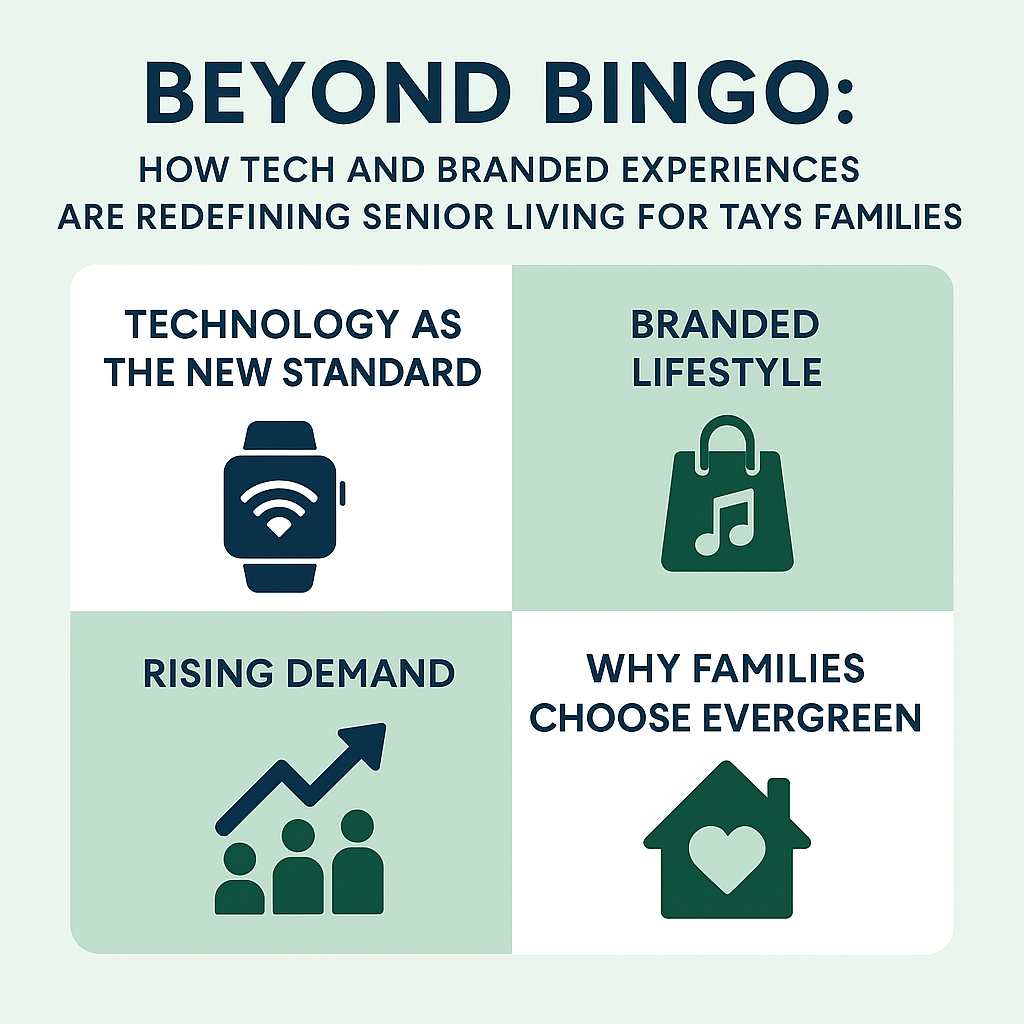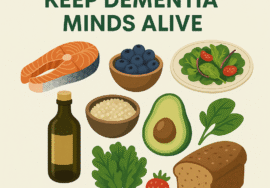
Guidance for Families Navigating a Loved One’s Dementia Diagnosis
Receiving a dementia diagnosis for a loved one is a profound moment that can reshape your world. In an instant, the future can feel uncertain and overwhelming. You are not alone in this feeling. The path ahead is one of transformation, not just for your loved one, but for your entire family. The goal is not to have all the answers immediately, but to build a compass that will guide you through the journey. This series is designed to be that compass, offering clear, step-by-step guidance to help you navigate the emotional, practical, and care-related decisions with confidence and compassion.
Table of Contents
- Understanding the New Landscape: Processing the Diagnosis and Building Your Foundation
- Communicating with Compassion: Adapting Your Approach for Meaningful Connection
- Creating a Safe and Supportive Home Environment
- The Importance of Legal and Financial Planning
- Navigating the Evolving Role of Caregiver
- Exploring Senior Living Options: A Proactive Approach
- Essential Questions for Your Senior Living Tour
- Frequently Asked Questions for Families
Understanding the New Landscape: Processing the Diagnosis and Building Your Foundation
The first and most critical step after a diagnosis is to allow yourself and your family to process the news. It is normal to experience a flood of emotions—grief, fear, anger, and denial. Give yourself permission to feel these things without judgment. This is not a single event but the beginning of a process of acceptance. Your ability to be a stable support for your loved one starts with acknowledging your own emotional landscape.
Once you have taken a moment to breathe, the next step is to become a student of the specific diagnosis. Dementia is an umbrella term; understanding whether it is Alzheimer’s disease, vascular dementia, Lewy body dementia, or another form is crucial. Each type has its own common progression patterns and symptoms. Arm yourself with information from reputable sources like the Alzheimer’s Association or the National Institute on Aging. Knowledge is not about fearing the future, but about demystifying it and reclaiming a sense of control.
Building Your Care Team Early
Do not try to navigate this path by yourself. Your loved one’s care team is your most valuable ally. This includes their primary care physician, neurologist, and any geriatric specialists. Prepare a list of questions before each appointment. Ask about what to expect in the coming months, what medications or non-drug therapies might help manage symptoms, and what clinical trials or local resources they recommend.
Simultaneously, start building your personal care team. This is your inner circle of family and friends. Be specific when people offer to help. Can they sit with your loved one for two hours on Tuesday? Can they help with grocery shopping or meal preparation? Often, people want to assist but do not know how. By directing them, you lighten your load and allow others to contribute in meaningful ways.
Communicating with Compassion: Adapting Your Approach for Meaningful Connection
As dementia progresses, it can change how your loved one communicates and interprets the world. The person you know is still there, but the way you reach them may need to change. Compassionate communication is about connecting with the emotion behind the words, not just correcting the facts.
Practical Strategies for Effective Communication
- Master the Environment: Always approach from the front, make eye contact, and ensure you have their attention before you speak. Reduce background noise like the television or radio to minimize confusion.
- Use Simple Language: Ask one question at a time. Use short, simple sentences. Instead of, “Would you like to put on your jacket and shoes so we can go to the store and get groceries for dinner?” try, “Let’s go to the store. Here is your jacket.”
- Practice Validation, Not Correction: If your mother insists she needs to go to her childhood home, do not argue that she has not lived there in 50 years. Instead, enter her reality. Say, “Tell me about your home. What did you love about it?” Aruing facts creates agitation; validating feelings creates connection.
- Listen with All Your Senses: Agitation may signal pain, hunger, or a need to use the restroom. Restlessness could mean they are bored or under-stimulated. Learn to read the non-verbal cues that their words can no longer convey.
Creating a Safe and Supportive Home Environment
Your goal is to create a home that supports independence and minimizes frustration and danger. This is not about instituting a hospital-like atmosphere, but about making thoughtful adaptations that promote safety and dignity.
Start with a safety audit. This is a proactive measure, not a reaction to a problem. Look for potential hazards like loose rugs, clutter on the floor, and poor lighting. Install grab bars in the bathroom and by the toilet. Consider a shower chair and non-slip mats. Lock up cleaning supplies, medications, and any dangerous tools. If wandering is a concern, simple measures like placing black tape on the floor in front of a door or using a “stop” sign can be deterrents; for more advanced cases, you may need to install alarms or new locks placed high or low on doors.
Establishing Routine and Incorporating Meaning
Routine is an anchor in the confusing world of dementia. A predictable flow to the day—waking, meals, activities, and bedtime at roughly the same times—can reduce anxiety and confusion. Within that routine, it is vital to incorporate activities that bring joy and a sense of purpose. This is not about busywork, but about connection. Listen to their favorite music, look through old photo albums, fold laundry together, or simply sit in the garden. Focus on the process, not the outcome. The goal is the moment of shared connection and the feeling of being valued and engaged.
The Importance of Legal and Financial Planning
While adapting to the day-to-day changes, it is essential to address the foundational legal and financial matters that will protect your loved one and your family in the future. This can feel daunting, but it is one of the most concrete and loving actions you can take. Having these plans in place ensures that your loved one’s wishes are honored and prevents family crises down the road.
The key is to act as early as possible, while your loved one still has the legal “capacity” to understand and sign documents. The core documents you need are:
- Durable Power of Attorney (POA): This designates a trusted person (the agent) to manage financial and legal affairs if your loved one becomes unable to do so. Without it, you may have to go through a lengthy and costly court process to become a legal guardian.
- Advanced Healthcare Directives: This includes a Living Will, which outlines wishes for end-of-life medical care, and a Medical Power of Attorney (or Healthcare Proxy), which designates someone to make medical decisions on their behalf.
- Will and/or Living Trust: These documents dictate how assets will be distributed after their passing.
Consult with an attorney who specializes in elder law. They understand the specific complexities of your state’s laws and can ensure everything is drafted correctly. For families in Texas, an elder law attorney can provide crucial guidance on state-specific programs and protections.
Navigating the Evolving Role of Caregiver
Stepping into the role of caregiver is a gradual process that often begins with small assists—helping with bills, driving to appointments—and evolves into more hands-on care. This shifting dynamic can be one of the most challenging aspects of the journey, as you balance being a child or spouse with being a care manager. It is common to feel a sense of role reversal, which can be uncomfortable for both you and your loved one.
To navigate this, focus on partnership and support rather than taking over. Phrase assistance as a collaboration: “Let’s look at these bills together,” or “I’ll drive so we can enjoy the scenery.” This helps preserve their dignity and autonomy for as long as possible. Be mindful of your own emotional state; your frustration or stress can be palpable and can agitate your loved one. Your calm and patient presence is a powerful form of care.
The Non-Negiable: Caring for the Caregiver
Caregiver burnout is not a sign of weakness; it is a real and serious risk. You cannot pour from an empty cup. Your own health and well-being are critical to your ability to provide sustained, quality care. Make self-care a non-negotiable part of your routine. This is not selfish; it is strategic.
- Respite is Essential: Seek out respite care options. This could be from other family members, friends, or professional in-home care agencies that provide companionship and care so you can take a break.
- Find Your Community: Join a local or online caregiver support group. Sharing your experiences with others who truly understand is incredibly validating and can be a source of practical tips and emotional solace.
- Watch for Signs of Burnout: Chronic fatigue, irritability, withdrawal from friends and activities, changes in sleep or appetite, and feelings of hopelessness are all red flags. When you see them, it is a signal that you need to lean on your support system more heavily.
Exploring Senior Living Options: A Proactive Approach
There may come a point when the care needs of your loved one exceed what can be safely or sustainably provided at home. Viewing this not as a failure, but as a proactive and loving next step, is vital. Starting the research process early, before a crisis forces a quick decision, empowers you to make a thoughtful choice.
The senior living landscape has several options, each designed for different levels of need:
- Independent Living: Ideal for seniors who can manage independently but want a maintenance-free lifestyle with social opportunities. While not designed for dementia, some communities have adjacent memory care support.
- Assisted Living: Provides support with activities of daily living (ADLs) like bathing, dressing, and medication management. Many assisted living communities have dedicated memory care units or neighborhoods.
- Memory Care: These are specialized, secure communities designed specifically for individuals with Alzheimer’s and other dementias. They offer 24-hour supervised care, structured activities tailored to cognitive abilities, and secure environments to prevent wandering. For families searching for memory care Katy TX, it’s important to look for communities with trained staff and programs that go beyond basic care.
- Skilled Nursing Facilities (Nursing Homes): Provide the highest level of medical care outside of a hospital, for those with complex medical needs in addition to dementia.
Understanding how much does assisted living cost in Texas and the costs of memory care is a critical part of the planning process. Costs vary significantly based on location, level of care, and amenities. Explore all payment options, including long-term care insurance, veterans’ benefits, and private funds.
Essential Questions for Your Senior Living Tour
Walking through a potential senior living community is the most important step in the decision-making process. It is where brochures and websites become reality. To move beyond the sales pitch and understand the true quality of life and care, you need to ask specific, revealing questions. Go beyond the aesthetics of the building and focus on the people, the programming, and the philosophy of care.
Prepare a checklist and take notes. It is easy for details to blur together after touring multiple locations. Pay close attention to your gut feeling. Does the community feel warm and engaging, or is it merely clean and quiet? Are residents involved in activities, or are they mostly in their rooms? How do the staff members interact with residents? Do they speak to them with respect and kindness, using their names?
Key Areas to Investigate:
- Staffing and Training: “What is your staff-to-resident ratio during the day and overnight? What specific, ongoing dementia care training does your team receive? How do you handle situations when a resident becomes agitated or aggressive?”
- Safety and Security: “What are your specific security measures to prevent wandering? How are emergencies, like a fall, handled? What is your protocol for notifying family members of an incident or change in health status?”
- Daily Life and Engagement: “May I see a copy of this month’s activity calendar? Can you describe a typical day for a resident here? How do you personalize activities for residents with different interests and abilities? Are residents grouped by cognitive level to ensure activities are appropriate?”
- Care and Medical Management: “How are care plans developed and how often are they reviewed? Is there a nurse on-site 24/7? How are medications managed? How do you partner with outside healthcare providers?”
Remember, you are not just choosing a facility; you are choosing a new home and a care team. For those considering assisted living Katy TX or the surrounding areas, finding a community that feels like an extension of your family’s values is paramount.
Frequently Asked Questions for Families
How do I know when it’s time for memory care?
This is one of the most difficult questions families face. Look for key safety red flags: frequent wandering or getting lost, forgetting to turn off the stove, poor hygiene, increased falls, and medication mismanagement. Equally important is caregiver burnout. If the care demands are compromising your health, well-being, or ability to work, it is time to explore options. The need for 24/7 supervision is a clear indicator that a specialized environment is necessary.
What is the difference between assisted living and memory care?
While both provide support, memory care is specifically designed for the unique challenges of dementia. Assisted living offers help with daily tasks (bathing, dressing, meals) in a residential setting, but may not have secure environments or staff with specialized dementia training. Memory care units are secure to prevent wandering and offer structured activities, higher staff ratios, and a physical layout designed to reduce confusion and agitation.
How much does memory care cost in Texas?
Costs vary based on location, room size, and the level of care required. In Texas, monthly costs for memory care can range significantly. It is essential to get detailed pricing from each community, as some have all-inclusive rates while others charge a base rate plus additional fees for care tiers. Always ask exactly what is included in the quoted price.
What if my parent refuses to go to a senior living community?
This is a very common and painful hurdle. Avoid direct confrontation. Instead, use “I” statements to express your concern, such as “I worry about you being alone if you fall,” rather than “You can’t live alone anymore.” Frame the move as a solution to a specific problem, like loneliness or home maintenance. A trial period, such as “Let’s just try it for a month of respite care,” can often reduce the pressure. Involving a trusted third party, like a doctor or clergy member, can also help.
How can I pay for memory care?
Private funds, including savings and proceeds from the sale of a home, are the most common sources. Long-term care insurance can cover some costs, depending on the policy. Veterans and their spouses may be eligible for Aid and Attendance benefits. While Medicare does not cover long-term memory care, Medicaid (in Texas, STAR+PLUS) may cover it for those who qualify financially and medically, but not all communities accept it. Early financial and legal planning is crucial to navigate these options.
What can I do to make the transition to a new community easier?
Preparation is key. Before move-in, bring familiar items—furniture, photos, a favorite blanket—to make the new space feel like home. Work with the staff to create a “life story” book about your loved one to help caregivers connect with them. For the first few weeks, visit at different times of the day, but also give them space to adjust. Avoid long, emotional goodbyes; a cheerful and confident departure helps them feel secure. Trust the staff and communicate with them regularly as your loved one settles in.
This journey with your loved one is one of profound love, resilience, and adaptation. There will be difficult days and moments of beautiful connection. By educating yourself, building a strong support network, and making decisions from a place of love rather than fear, you can ensure your loved one lives with the dignity, safety, and compassion they deserve. You are their advocate and their anchor, and in that role, you are doing more than you may ever know.








